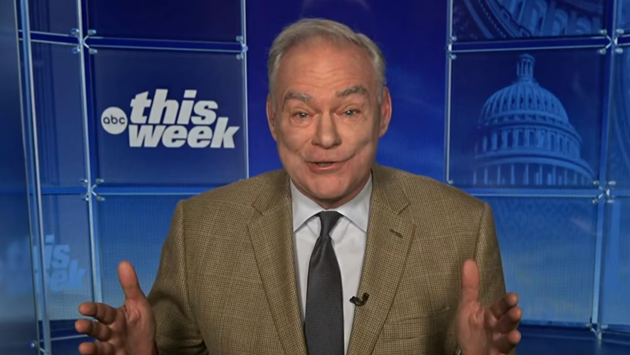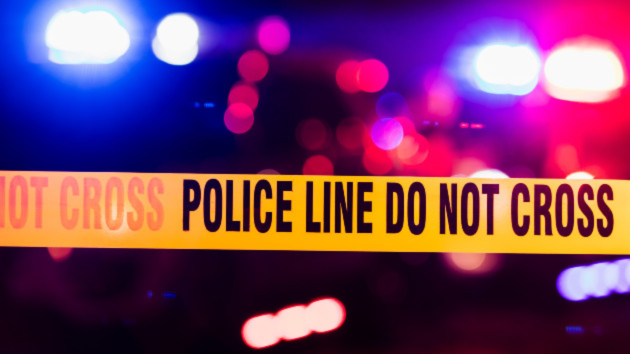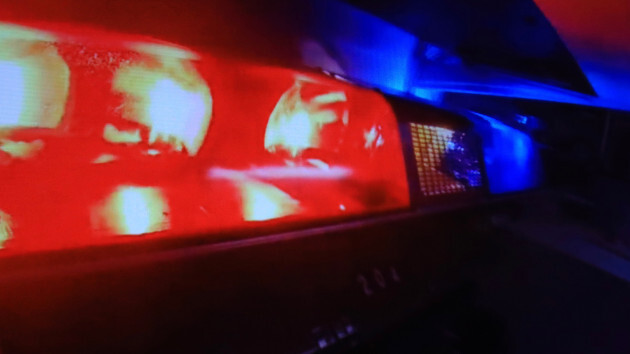Survivors say Buffalo’s history of segregation and racial tensions linked to Tops shooting
Written by ABC Audio. All rights reserved. on May 8, 2023
(BUFFALO, N.Y.) — Dr. Eva Doyle describes herself as one of the “regular Saturday shoppers” at the Tops supermarket on Buffalo’s predominantly Black east side.
But on May 14, 2022, the retired public school teacher broke from her weekend routine and went to pick up her dry cleaning — a twist of fate that likely saved her life.
While waiting for her garments, her cellphone rang with loved ones worried she had been in the grocery store when a horrific racially motivated mass shooting unfolded. A teenage white supremacist drove hours from Conklin, New York, to Buffalo intent on killing as many Black people as possible.
“He took the best of us,” Doyle, 77, told ABC News of the 10 victims who died, among them church mothers, a church deacon, a community activist and a father picking up a birthday cake for his 3-year-old son.
Advocates for the east side say Buffalo’s history of racial tensions and pronounced segregation provided the killer a roadmap to carry out the massacre, further wounding a community that has been reeling from decades of neglect and exposing underlying inequalities.
“I think it was very clear it was going to happen,” said Charley Fisher III, an at-large member of the Buffalo Common Council from 1999 to 2003, who links the Tops killings to those racial tensions.
A 2019 University of California, Berkeley, study ranked Buffalo the 17th most segregated city in America. About 85% of its Black population live on the east side, according to a 2018 study by the Partnership for the Public Good, a Buffalo think tank. And the Tops shooting came amid a nationwide rise in concerns about white supremacy.
In the aftermath of the rampage a year ago this week, the killer, Payton Gendron, pleaded guilty and was sentenced to life in prison without the possibility of parole. He confessed to plotting the onslaught for months, studying the city’s Black community, pinpointing the neighborhood where the majority of them lived and finding the Tops on Jefferson Avenue, the east side’s only supermarket, packed with Black shoppers on the Saturday afternoon he executed his plan.
Fears of whitewashing
Doyle said she’s concerned the Tops massacre will be forgotten or whitewashed, pointing to the trend of African American history books being pulled from library shelves and African American studies banned from classrooms.
While Buffalo is known widely as a major stop on the Underground Railroad for fugitive slaves in the early-to-mid-19th century, Doyle said her fears were justified when she learned decades ago that much of the city’s other Black history had gone undocumented.
“I wanted to have a book to read to my students about Buffalo’s Black community. I went to our school’s library and there was no book. I went to some surrounding libraries, there was no book,” said Doyle, who taught in the Buffalo public schools for 30 years and in 1982 penned the first of the dozen history books she has now written.
The Great Migration
During the so-called Great Migration, an estimated 7 million Black people in search of work moved from the South to Northern and Western states between 1915 and 1970.
“When we talk about industrial Buffalo, the focal point was Buffalo’s east side. And where people lived was dictated by where they worked,” said Dr. Henry Louis Taylor, director of the Department of Urban and Regional Planning at the University at Buffalo.
Many Black Buffalo newcomers found jobs at companies like Bethlehem Steel, the Republic Steel Corp. and the Ford Motor Company.
Fisher said his father moved to Buffalo in 1939 from Louisiana and got a job, “sweeping a broom” at the Westinghouse factory in nearby Cheektowaga.
“They weren’t the best of jobs, and he was a college-educated man,” Fisher said. “But he took the job in hopes of an opportunity, and he got it.”
As thousands of African Americans moved into the east side, thousands of their white neighbors began rushing to the suburbs, Taylor said.
Due to “redlining” — a practice once used by mortgage companies to keep people of color out of desirable neighborhoods — most Black residents were limited to buying homes on the east side that had been vacated by whites, Taylor said.
Humboldt Parkway and War Memorial Stadium
One of the neighborhoods where Black residents were able to buy homes was around Humboldt Parkway — a 56-acre green space designed by landscape architect Frederick Law Olmsted, famous for designing Central Park in New York City. The parkway featured more than a million trees and was the pride of the east side community.
But in 1957, the famous urban planner, Robert Moses, designed Route 33, also known as the Kensington Expressway. The partially below grade freeway was completed by 1964, replacing much of Humboldt Parkway, uprooting most of its trees, displacing hundreds of households and cutting the east side in half. It greatly devalued homes in the area, Taylor said.
Nevertheless, through the late 1950s and early 1960s, Buffalo’s east side remained a bustling community, full of grocery stores and businesses, many owned by Black merchants, Doyle recalled.
“We had a Black-owned grocery store. We had a furniture store. We had movie theaters, one was called The Apollo, where you could go on Saturday nights to see movies. We had an ice cream store,” Doyle recalled.
The centerpiece of the east side was the War Memorial Stadium. Nicknamed the “The Rockpile,” it was where the Buffalo Bills played and won back-to-back American Football League championships in 1964 and 1965.
In 1967, however, conditions on the east side began to take a drastic slide, Doyle said.
“Something happened in 1967,” she said. “We had a race riot.”
1967 race riot
During the summer of 1967, race riots broke out in more than 150 cities across the nation as frustration over abusive policing and deteriorating economic conditions in African American neighborhoods boiled over. In June 1967, hundreds of residents took to the streets of the east side protesting the police abuse of two Black teens.
“Cars were turned over, fires started, bricks were thrown at businesses,” Doyle recalled.
The riots lasted for six days.
Then-New York Gov. Nelson Rockefeller sent Black baseball legend Jackie Robinson, who was serving as the governor’s special assistant for urban affairs, to Buffalo to try to quell tensions. And in November 1967, the Rev. Martin Luther King Jr. gave a speech at Buffalo’s Kleinhans Music Hall, telling a crowd, “We are moving toward the day when we will judge a man by his character and ability instead of by the color of his skin.”
In the aftermath of the 1967 riots, some of the damaged businesses never reopened and many of the neighborhood’s few remaining white residents threw in the towel and moved out, Taylor said.
In 1972, the east side was dealt another major setback when the Buffalo Bills also moved to the suburbs, landing at Orchard Park.
‘A real sense of despair’
Conditions on the east side continued to rapidly deteriorate in the early 1980s, when the Republic Steel and Bethlehem Steel plants shuttered.
Fisher, president of the community activist group B.U.I.L.D. of Buffalo, said that in the 1970s and mid-1980s, Buffalo’s population plummeted from 500,000 to around 250,000.
“In 1980, I felt a real sense of despair of blighted buildings, buildings closed, no job opportunities,” said Fisher, adding the same conditions exist today as much of the country emerges from the COVID pandemic and the worst inflation in 40 years.
During the downturn of the 1980s, Buffalo’s Black community was terrorized by a racist serial murderer dubbed the “.22-Caliber Killer,” a 24-year-old white Buffalo resident who prosecutors suspect killed 12 Black people in Buffalo and throughout New York.
“The tensions leading up to the Tops shooting are the same tensions that led up to the .22-caliber killings,” Fisher said. “It’s an undercurrent, a counterculture of hate. We never learned the lesson of being too busy to hate.”
Copyright © 2023, ABC Audio. All rights reserved.





